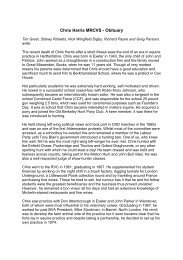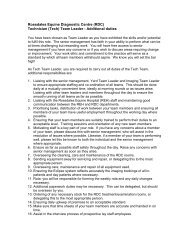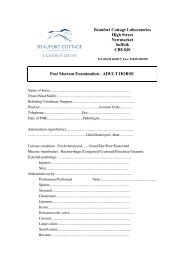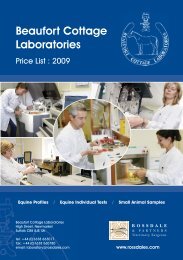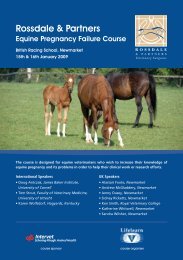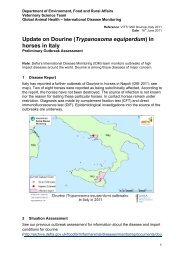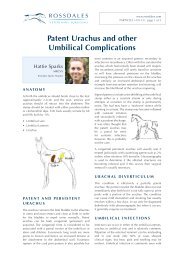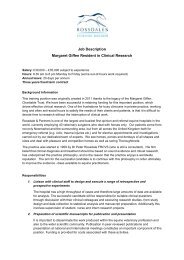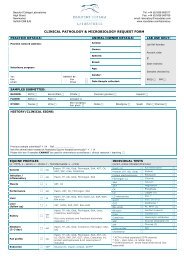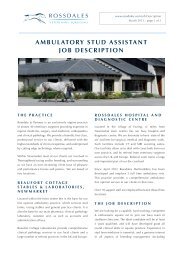EQUINE CLINICAL PATHOLOGY - Rossdale & Partners
EQUINE CLINICAL PATHOLOGY - Rossdale & Partners
EQUINE CLINICAL PATHOLOGY - Rossdale & Partners
Create successful ePaper yourself
Turn your PDF publications into a flip-book with our unique Google optimized e-Paper software.
G u i d e t o e q u i n e c l i n i c a l p a t h o l o g y<br />
from failure of retention - in such cases,<br />
creatinine is not a valid arithmetic constant.<br />
Electrolyte imbalance may predispose<br />
exercise-induced myopathy in horses<br />
in training and so fractional clearance<br />
ratios may sometimes be helpful in the<br />
investigation and management of recurrent<br />
cases. Dietary deficiencies, excesses or<br />
imbalances can be corrected and return<br />
to normal excretion rates monitored,<br />
sometimes with useful results in terms of<br />
resolution of myopathy.<br />
In secondary nutritional hyperparathyroidism,<br />
which occurs in horses on a<br />
high phosphate diet, phosphate excretion<br />
rate is high, indicating the need for oral<br />
calcium supplementation and phosphate<br />
reduction, to restore balance. Experience<br />
has shown that in UK, many healthy,<br />
fit, stabled and well performing horses,<br />
receiving high cereal training rations, have<br />
urinary fractional phosphate excretion rates<br />
in excess of 9%, emphasising the need for<br />
calcium supplementation. Higher excretion<br />
rates are seen in horses with clinical<br />
manifestations of secondary nutritional<br />
hyperparathyroidism, which include shifting<br />
lameness, periosteal thickening, facial and<br />
mandibular swelling.<br />
Urinary phosphate clearance ratios are useful<br />
measures of calcium:phosphate balance in<br />
weanlings and yearlings, important for<br />
bone growth and development. Calcium:<br />
phosphate imbalance can predispose to<br />
physitis.<br />
Calcium, Potassium and Chloride<br />
Electrolyte imbalance and fluid loss may<br />
occur with diarrhoea, endotoxaemia,<br />
intestinal crises and exertional exhaustion.<br />
The latter is of particular importance for<br />
endurance horses and for other horses<br />
performing in hot and humid weather<br />
conditions. Serial assays are helpful with<br />
intensive care cases. In other cases,<br />
fractional urinary electrolyte excretion<br />
rates (see page 30) are a much better<br />
assessment than single serum assays.<br />
Electrolyte assays are very important to<br />
the assessment of neonatal foals under<br />
critical care, with specific supplementation,<br />
where indicated and monitoring of return<br />
to normality.<br />
Calcium, Phosphate and Magnesium<br />
Mineral analysis may be helpful in young<br />
horses, i.e. yearlings and two-year-olds<br />
coming into training, with signs suggesting<br />
abnormalities of bone metabolism. As<br />
homeostatic mechanisms are efficient,<br />
serum levels are often normal even in the<br />
face of whole body abnormality, and thus<br />
urinary fractional excretion rates (see page<br />
30) are of greater value.<br />
Hypocalcaemia is a cause of synchronous<br />
diaphragmatic flutter in performance horses<br />
and of uterine inertia in pregnant mares<br />
at full term, requiring cautious corrective<br />
therapy.<br />
31



